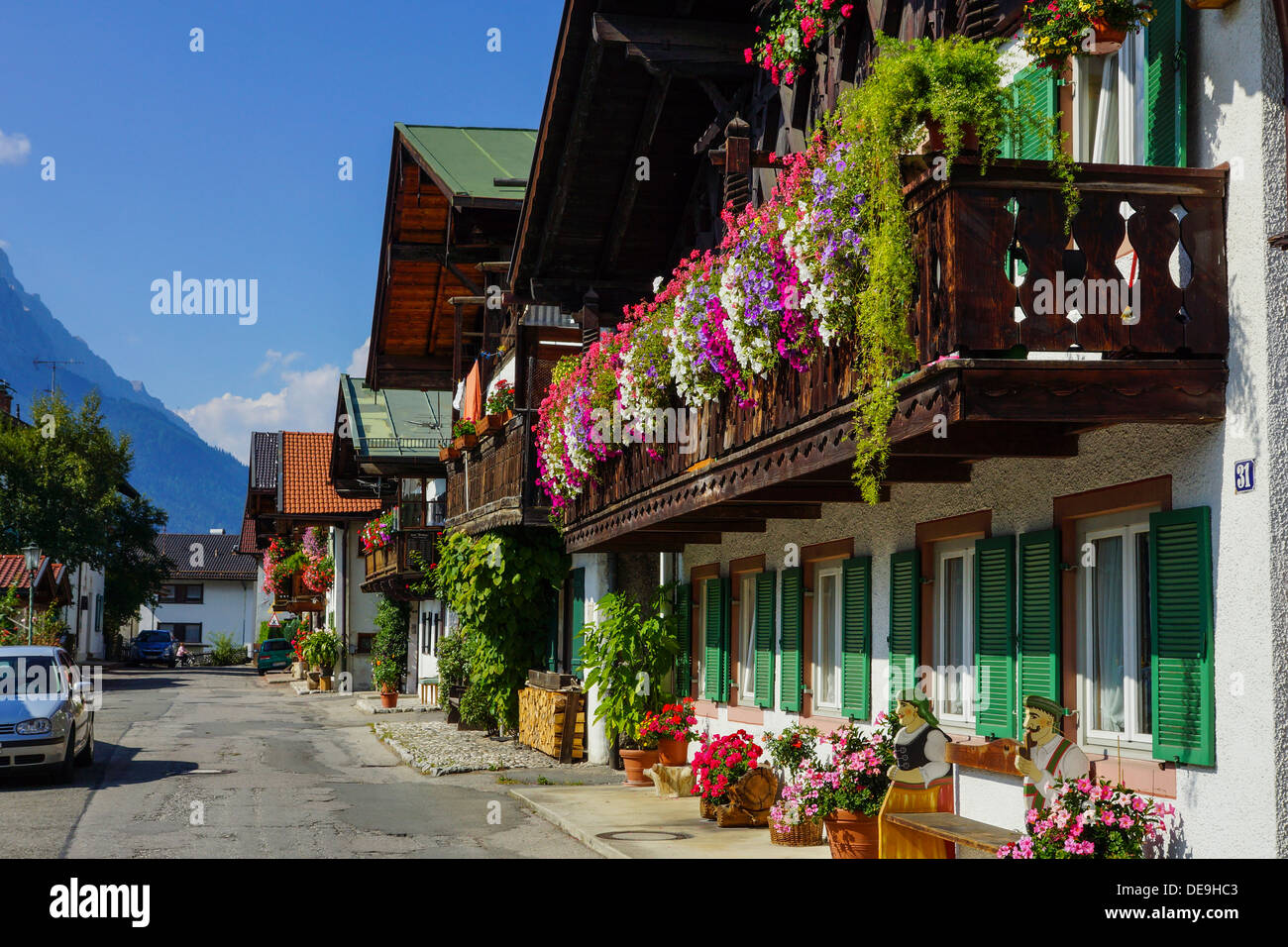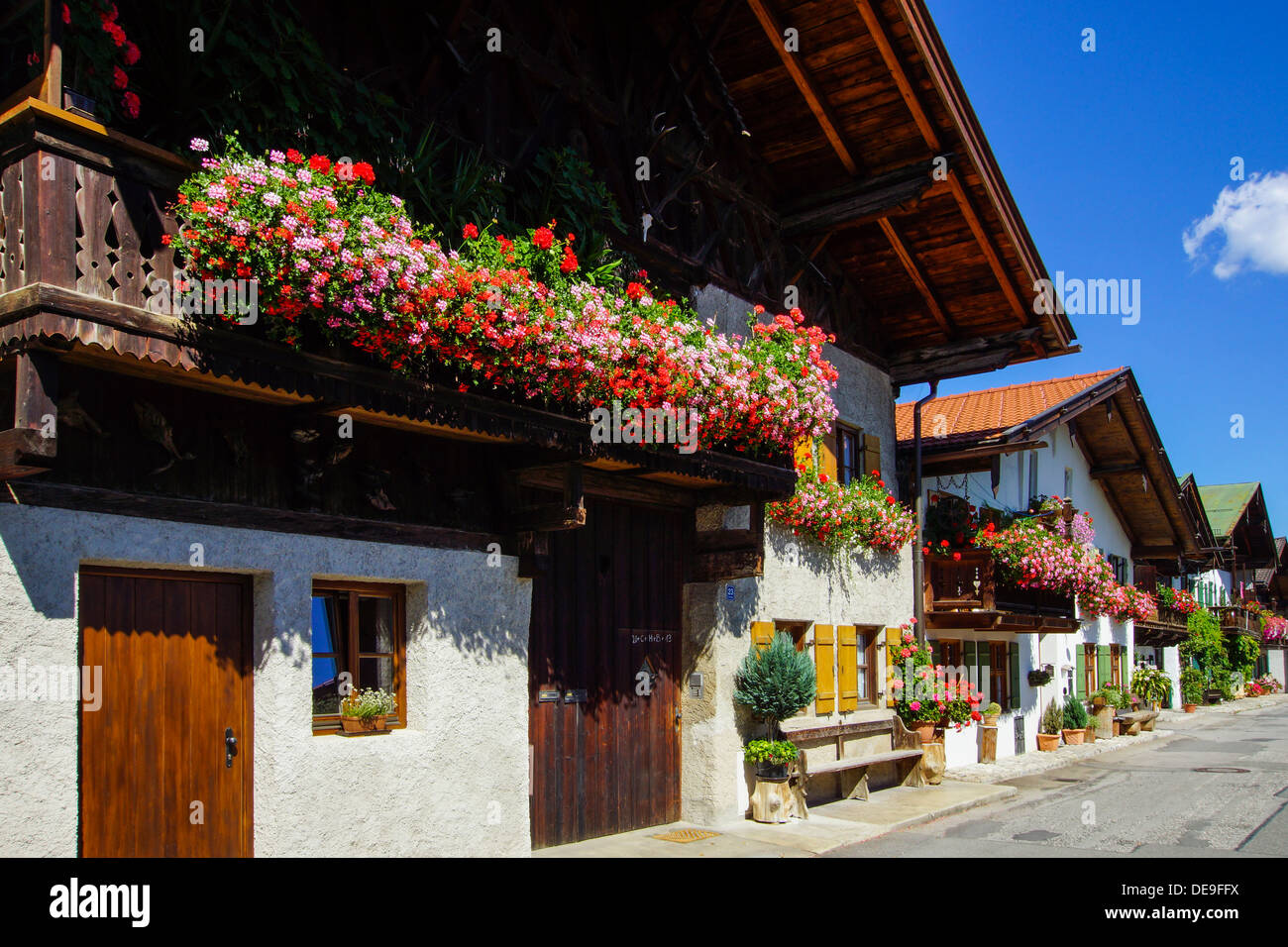Garmisch-Partenkirchen (district)
The district of Garmisch- Partenkirchen is located in the southwest of the Bavarian administrative region of Upper Bavaria. Neighboring counties are in the northern district of Weilheim -Schongau, in the eastern district of Bad Tölz- Wolfratshausen, in the south of the Austrian province of Tyrol with the districts of Innsbruck-Land, Imst and Reutte and in the west of the Swabian Ostallgäu.
- 3.1 Traffic
- 4.1 district elections
- 4.2 Coat of Arms
Geography
The southern part of the county, the Werdenfelser country, partly with the high-alpine rock massifs of the Karwendel and Wettersteingebirge. ( Zugspitze 2,962 m the highest mountain in Germany ) and is located at the border to Tyrol in Austria To the north the mountains lowers up to the pre-Alpine hills of Pfaff angle with lakes and extensive marshes.
History
Around 1000 AD, the area was owned by the Guelphs, who built the castle to become rock. 1249 acquired the bishopric of Freising to Guelph property, and in 1294 the counties of Mittenwald and Partenkirchen and formed the rich immediate County Will Rock, which was only dissolved in 1803 in the secularisation. The territory became part of Bavaria, in 1803, the Regional Court Will Rock built, which initially belonged to Innkreis and from 1814 to the Isar circle ( since 1838 called Upper Bavaria ). 1862 originated from the same county, which was in 1879 renamed " county Garmisch ."
Following the unification of the towns of Garmisch and Partenkirchen in 1935 and the district office and from 1939 the District Office or the associated district received the double name Garmisch -Partenkirchen. As part of local government reform in 1972 the district of Garmisch -Partenkirchen were incorporated some communities of the neighboring counties Weilheim in Oberbayern and Schongau. He was given its present extent.
Population Development
The district of Garmisch -Partenkirchen won 1988-2008 nearly 7,000 residents added or increased by approximately 9 %.
The following numbers refer to the territorial status of 25 May 1987.
Economy and infrastructure
The economy in the district is characterized rather medium. The Agriculture has a significant impact on the economic structure of the district. Overall, about 15 % of the county area are used for agriculture.
The income tax power per inhabitant in 2004 was at 272 euro ( national average 216 euros ). The purchasing power per capita in 2005 was ( 8.52 euro national average ) at 7.67 euros. In July 2011, the unemployment rate in the county at 3.3 %, much lower than the national average.
The region around Garmisch -Partenkirchen is a classic tourist area and also a noted olympic (1936) and World Cup proven (1978 ) resort. He could successfully bid to host the Alpine World Ski Championships in 2011, after the previous application was lost for the World Ski Championships in 2009 against the French Val d'Isere. The only opposition candidate was Schladming ( Austria ).
Traffic
The state railway line from Munich reached in 1879 Murnau. After the 1889 by the local railway Aktien-Gesellschaft München (LAG ) opened continuation to Garmisch in the Bavarian State Railway was passed, this extended web 1912 Mittenwald to the Austrian border, so that the connection was made with Innsbruck.
Similarly, the Tyrolean district of Reutte in 1913 was opened from Garmisch forth by the Außerfernbahn.
The local railway Murnau - Oberammergau was built in 1900 by AG E- Works front OL Kummer & Co. in 1905 and electrified by the LAG.
Pure tourist purposes the route of the Bavarian Zugspitze Railway, which was 1929/30, opened from Garmisch to Schneefernerhaus and since 1992 also leads to the Zugspitze.
All train lines are in operation today.
The road network includes a motorway ( A 95 ), three federal highways (B 2, B 11 and B 23 ) and a relatively dense network of state, county and local roads.
Policy
District elections
The last local elections resulted in the following seat distribution in the council:
Coat of arms
Blazon: About shortened and turned schweifter tip, in the Bavarian lozenges, split of silver and gold; a front left inverted red lion grasping; behind a red -winning Mohrenkopf with red earring, as an indication of the membership of the county to become the rock to the Bishopric of Freising.
Markets and communities
(Population at 31 December 2012)
Markets
Free community area
Management Communities
Communities
Markets and communities of the county before the municipal reform 1971/78
Until the local government reform in 1971/78 the district of Garmisch -Partenkirchen had 16 communities ( see list below).
In the south and southwest of the county bordering on the Austrian state of Tyrol. In the west, bordering the county to the county feet, on the northwest by the district of Schongau in the north by the district of Weilheim i.OB. and in the east it bordered with the district of Bad Tölz.
The villages of the district of Garmisch- Partenkirchen in front of the municipal reform 1971/78. (Municipalities, which still exist today are written in bold. )
1: 1935 arose from the communities Garmisch (market ) and Partenkirchen 2: 1937 arose from the communities Obergrainau and Untergrainau
Geotopes
The district is 44 (as of September 2013) are the Bavarian State Office for Environmental designated geological sites. See the list of geological sites in the district of Garmisch -Partenkirchen










